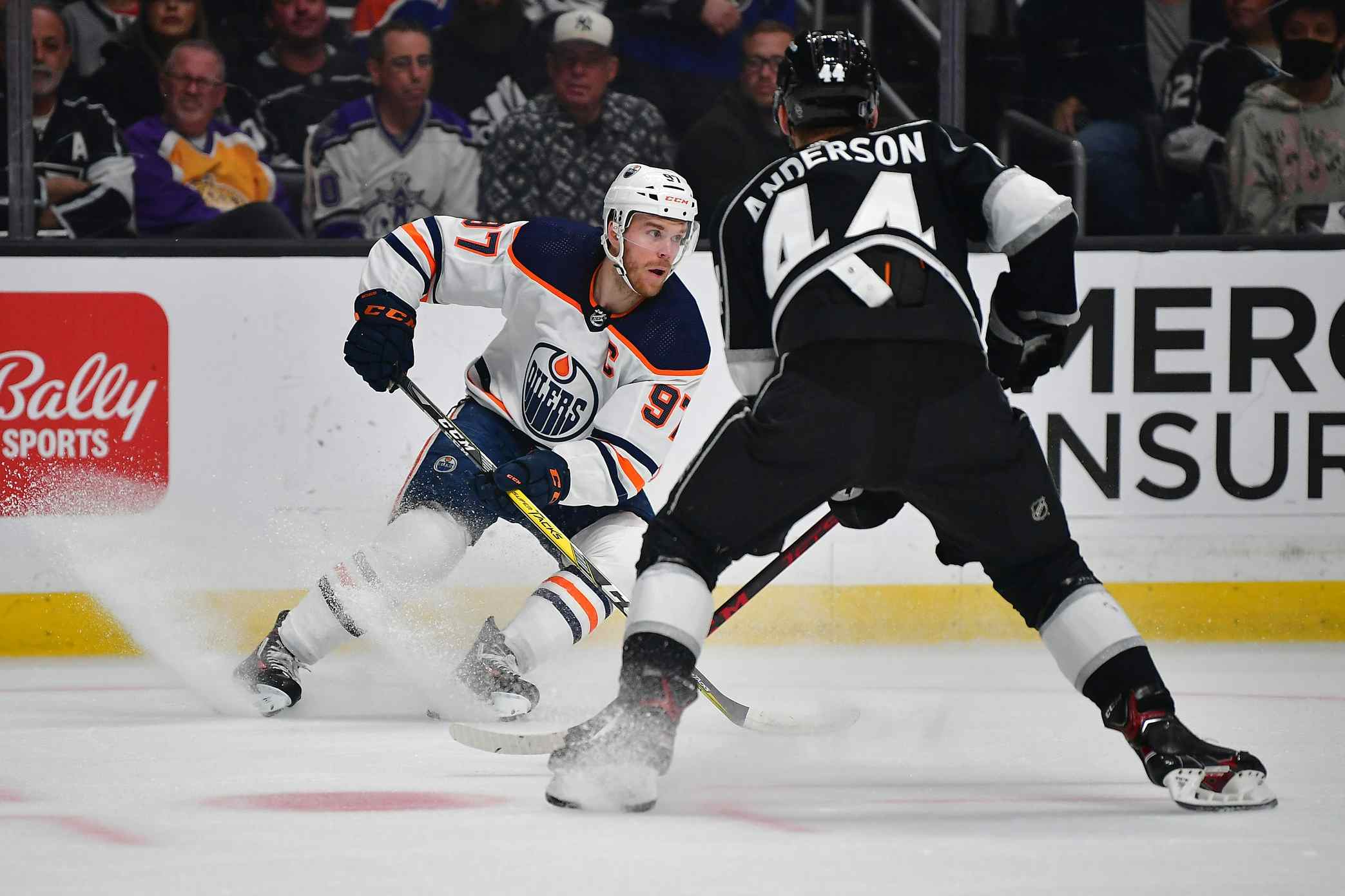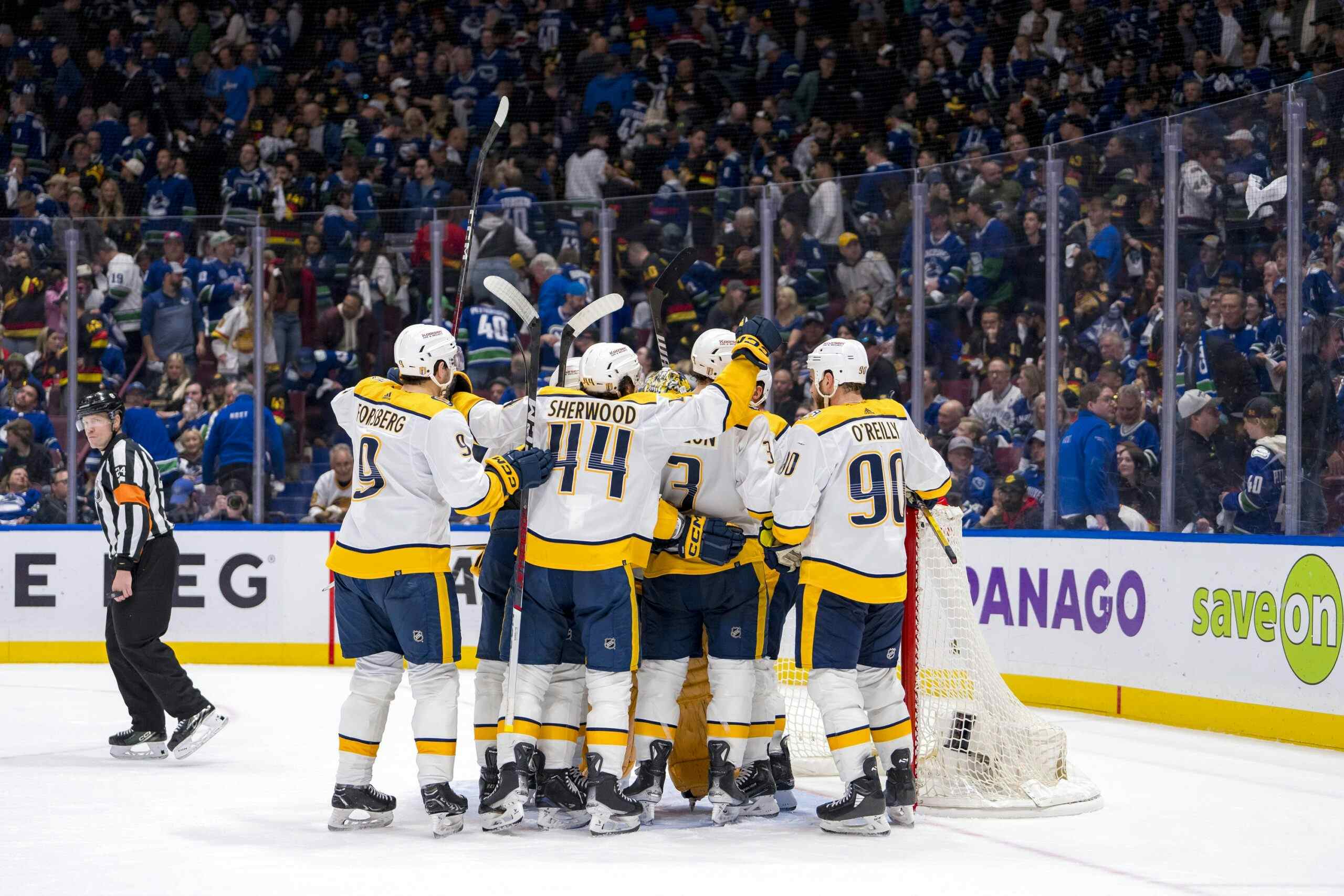THE RETURN OF THE JETS AND GREBESHKOV?
By Jason Gregor
10 years ago**This footage of game 6 vs. the Jets in 1990. Oiler fans might want to fast forward to the 9:30 mark.***
The Winnipeg Jets haven’t played in Edmonton since March 29th, 1996 when Miroslav Satan had a pair of goals in a 3-2 Oilers victory while Nikolai Khabibulin was in goal for the Jets, and Ryan Smyth was in his rookie season.
However, according to my source, that 17-year drought will end October 1st when the Jets return to Rexall Place for opening night against the Edmonton Oilers.
The Oilers schedule won’t be released until the NHL can finalize specifics on their participation in the Sochi Olympics, but whenever it comes out it will be the best schedule Oilers fans have seen in years.
The Oilers schedule won’t be released until the NHL can finalize specifics on their participation in the Sochi Olympics, but whenever it comes out it will be the best schedule Oilers fans have seen in years.
You will see all 16 eastern teams live at Rexall this year, and you will be able to watch the Oilers play Sidney Crosby, Steven Stamkos and the other East stars each once on the road.
The Oilers will play in the Pacific division and they will play the Ducks, Kings, Coyotes, Sharks, Canucks and Flames a total of 29 times. They will play five teams five times and one of them four times.
They will play 21 games, three each, vs. the Central division, Blues, Blackhawks, Wild, Jets, Avalance, Stars and Predators, and the remaining 32 games will be against eastern division opponents.
NEED A GOOD START
Every year teams talk about how you can’t make the playoffs in October, but you can miss them, and to an extent that is true. This past year, the Oilers went 4-3-3 and were in 7th place in the west before finishing in 12th.
I read a study (couldn’t find the damn link today) that said 77% of teams that are in the playoffs at the end of October stay there. Of course, the Oilers were one of the 23% that didn’t in 2011, but a good start usually can propel you to a strong season.
In 2013, six of the eight western teams that were in the playoffs after ten games made the playoffs. Chicago, Anaheim, San Jose, Vancouver, Detroit and St.Louis made them, while Nashville and the Oilers dropped out.
In the east, five of eight made it; Boston, Pittsburgh, Montreal, Ottawa and Toronto, while New Jersey, Carolina and Tampa Bay all missed. So 69% of the teams that were in a playoff spot after 10 games remained there.
Here is a a quick glance back at the previous seven full seasons, since the 2004/2005 lockout.
- At the end of October 2011, eleven of the 16 teams, 69%, (6 east and 5 west) who were in a playoff spot remained in a playoff spot at the end of the year. The Oilers were tied for first, but plummeted down the standings and missed the playoffs.
- At the end of October 2010, 12 of the 16 teams, 75%, (7 east and 5 west) finished in a playoff spot. The Oilers were 15th at both times.
- On October 31st, 2009, 12 of the 16 teams, 75%,( 6 east, 6 west) finished in the playoffs. The Oilers were tied for 7th with the Flames, but the Oilers finished 15th while Calgary ended up 10th.
- On October 31st, 2008, 13 of the 16 teams, 81%, (7 east, 6 west) finished in the playoffs. The Oilers were 12th, and finished the season in 11th place.
- At the end of October 2007, eleven of the 16 teams, 69%, (5 east and 6 west) rade the playoffs. The Oilers were 13th, and ended up 9th missing the playoffs by three points.
- At the end of October 2006, eleven of the 16 teams, 69%, (4 east and 7 west) remained in a playoff spot. The Oilers were 7th, but they finished 12th and missed the playoffs by a whopping 25 points.
- On October 31st, 2005, 12 of the 16 teams, 75%, (7 east, 5 west) remained in the playoffs. The Oilers were 9th, but they made the playoffs finishing 8th.
In the seven full seasons since the lockout, 73.3% of teams in the top eight at the end of October made the playoffs, but it will be interesting to see if the new playoff format alters those stats.
Under the new format the top three teams in each of the four divisions make the playoffs, while the remaining two wildcard spots in each conference go to he teams with the most points. Basically it is possible to have five teams from one of the western divisions and three from the other division, and the same in the east.
For the past eight seasons the Oilers haven’t been able to build off of good starts. They’ve been first once and 7th three times, but each year they ended up missing the playoffs.
I decided to look at the halfway point of each season, and see how much, if any, it improved a team’s odds of finishing in the playoffs. I chose the date in January where 50% of league games have been played. I looked at winning % to ensure it was the top-8 teams in case a team had played two or three fewer games.
- On January 9th, 2012, 14 of the 16 teams, 87%, (7 east and 7 west) who were in a playoff spot remained in a playoff spot. The Oilers were in 13th place an finished 14th. No one really tanked in the 2nd half, but Phoenix went 22-10-8 in their final 40 games to go from 11th to 3rd.
- On January 7th, 2011, 12 of the 16 teams, 75%, (7 east and 5 west) remained in a playoff spot. The Oilers were 15th at both times. The Avs were in 6th with 47 points in 41 games, but they went 9-29-3 (21 measly points) in their final 41 games and finished 14th.
- On January 2nd, 2010, 15 of the 16 teams, 93%,( 8 east, 7 west) remained in the playoffs. The Oilers were 15th and finished 15th. Calgary was the only team unable to keep their playoff spot. They were 24-12-5 and in 3rd place, but they went 16-24-5 in the 2nd half and finished 10th.
- On January 9th, 2009, 13 of the 16 teams, 81%, (7 east, 6 west) remained in the playoffs. The Oilers were 11th, and finished the season in 11th place. The Coyotes were in 7th with 45 points, but they managed only 34 points in the 2nd half and finished 13th.
- On January 5th, 2008, 13 of the 16 teams, 81%, (7 east and 6 west) remained in a playoff spot. The Oilers were 14th, with only 40 points in 43 games, but they picked up 48 points in their final 38 games to finish 9th and miss the playoffs by three points. The Canucks had 50 points at the halfway points, but they had a major 2nd half collapse with only 38 points in their final 41 games and finished 11th.
- On January 5th, 2007, 13 of the 16 teams, 81%, (5 east and 8 west) remained in a playoff spot. The Oilers were 10th, but they finished 12th. The biggest 2nd half choke came from the Habs. They had 51 points, 3rd in the east, but finished 10th with only 31 points in the 2nd half.
- On January 5th, 2006, 13 of the 16 teams, 81%, (7 east, 6 west) remained in the playoffs. The Oilers were 6th, and they made the playoffs finishing 8th. The LA Kings had 54 points (2nd in west) at mid-season, but they only accumulated 35 in the 2nd half and missed the playoffs.
Every year, except 2010/2011, the odds of remaining in a playoff spot increased significantly and the average rose to 82.7%.
The Oilers remained in relatively the same spot from the mid-way point to the end of the season, expect in 2007/2008 when they improved significantly. The Oilers haven’t been a good 2nd half team for the majority of the past 8 seasons, even in 2006, when they made the playoffs, they limped in.
When the NHL finally releases the schedule, I get why many will look at the first month and talk about needing a good start. A good first month won’t hurt, but unless the Oilers can maintain their start or improve as the season progresses it is hard to envision them making the playoffs.
QUICK HITS…
- The Grebeshkov signing means the Oilers have eight D-men on one-way deals, while Justin Schultz and Oscar Klefbom have two-way deals. We can all agree J.Schultz isn’t going to the AHL, so the Oilers will have to expose one of their D-men to waivers when the make their final cuts, unless they trade one of them.
- Some are wondering if this signing means a trade is coming. Which D-men do you think have trade value, other than Ladislav Smid, J.Schultz, Jeff Petry and Andrew Ference? Teams would take Nick Schultz, but I doubt he’d fetch the big, aggressive third line winger the Oilers are looking for. The rest of them wouldn’t get much of a return, other than draft picks. I believe this signing was made to enhance the competition within their 3rd pairing and not much more.
- LA Kings forward Dustin Brown didn’t use an agent when negotiating his new 8-year, $47 million deal. Agent fees vary, but 3% seems to be the normal rate. If my math is correct, that means Brown saved $1,410,000 in agent fees. Some will wonder why more players don’t do their own deals, but there is a lot of paperwork involved and most negotiations aren’t that easy. I suspect Brown had some sort of advisor/lawyer, family member or family friend helping him in some fashion.
RECENTLY BY JASON GREGOR
- CATCHING UP WITH JONES
- MACT: LOOKING TO WIN NOW
- CLIFFORD: OFFER SHEET
- HORCOFF SAYS GOODBYE
- WILL FERENCE BE THE LEADER
- OILERS SIGN SIX
- HORCOFF TO DALLAS
- BUY, BUY BELANGER
Recent articles from Jason Gregor





